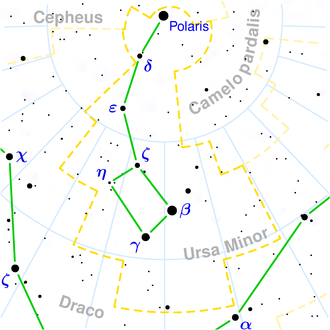NGC 5620
| Galaxy NGC 5620 |
|
|---|---|
|
|
|
| AladinLite | |
| Constellation | Little Bear |
|
Position equinox : J2000.0 , epoch : J2000.0 |
|
| Right ascension | 14 h 22 m 40.3 s |
| declination | + 69 ° 35 ′ 41 ″ |
| Appearance | |
| Morphological type | E-S0 |
| Brightness (visual) | 14.2 mag |
| Brightness (B-band) | 15.2 mag |
| Angular expansion | 0.5 ′ × 0.5 ′ |
| Surface brightness | 12.8 mag / arcmin² |
| Physical data | |
| Redshift | 0.030588 +/- 0.000097 |
| Radial velocity | 9170 +/- 29 km / s |
|
Stroke distance v rad / H 0 |
(417 ± 29) x 10 6 ly (127.7 ± 8.9) Mpc |
| history | |
| discovery | Wilhelm Herschel |
| Discovery date | April 3, 1785 |
| Catalog names | |
| NGC 5620 • PGC 51356 • CGCG 337-010 • MCG + 12-14-02 • GC 3888 • H III 319 • LDCE 1057 NED001 | |
NGC 5620 is a 14.2 mag bright, lens-shaped galaxy of the Hubble type E-S0 in the constellation Little Bear and about 417 million light years from the Milky Way.
It was discovered on April 3, 1785 by Wilhelm Herschel with an 18.7-inch reflector telescope, who described it as "eF, not verified".
This is one of the few controversial discoveries made by Wilhelm Herschel. Due to an inaccurate position, it is more likely that he observed NGC 5607 .
